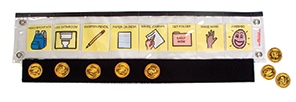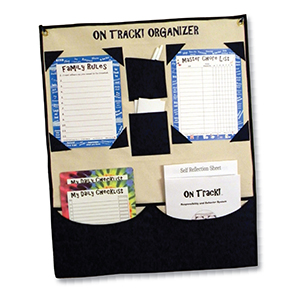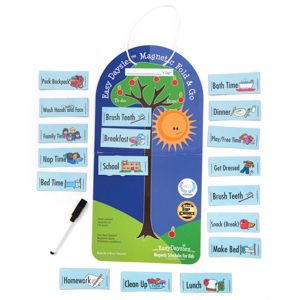Scanning is one of the first skills we teach learners with autism. This skill, (looking at each item presented and using that information to make decisions,) is essential for almost every other skill we teach children in early childhood. Historically, we have taught scanning skills through matching and listener responding activities by lining up 3 pictures or objects, then having the learner choose the correct match out of the three items or point to the item we have named. However, this is not representative of the way scanning skills are used in the natural environment.
 Consider how you use scanning in your own life: searching a row of books on a shelf to find a particular title, trying to find your favorite tomato soup in a supermarket aisle filled with soups, or looking through a box of Legos for one blue square Lego to complete a structure. None of the ways we scan in the natural environment present materials in a field of 3 neatly lined-up items.
Consider how you use scanning in your own life: searching a row of books on a shelf to find a particular title, trying to find your favorite tomato soup in a supermarket aisle filled with soups, or looking through a box of Legos for one blue square Lego to complete a structure. None of the ways we scan in the natural environment present materials in a field of 3 neatly lined-up items.
There are steps you should take in order to help prepare your learner for scanning in the natural environment. When working on matching items or identifying items, you should quickly reduce prompts (as discussed in this previous post) and increase the difficulty of scanning. There are two ways to do this: (1) increase the number of items in the field and (2) make the array of items messy.
If we take a look at matching, here is a sample of the steps for a matching program you might use to help teach the skill:
- Match an object to 1 of 3 objects placed on the table
- Match an object to 1 of 5 objects placed on the table
- Match an object to 1 of 5 objects placed in a messy array on the table
- Match an object to 1 of 8 objects placed in a messy array on the table
- Match an object to 1 of 10 objects placed in a messy array on the table
- Match an object to 1 of 5 objects with similar but non-matching items in the messy array (example: you’re trying to match a red car, in the array there will be a red car as well as a blue car and a red truck.)
- Match an object to 1 of 8 objects with similar but non-matching items in the messy array
As the learner masters each step, he/she is getting closer to what that skill looks like in the natural environment. Lastly, here are a few examples of how children use scanning in the natural environment. These can be used to practice the skill in ways that are motivating to your individual learner:
- searching for all the pieces to a costume for dress up play
- finding a specific piece to complete a puzzle or block structure
- looking for his/her favorite candy or snack at the supermarket
- finding a specified item in a picture (for example, if I have a learner that loves Elmo, I’ll find many pictues with Elmo shown and have the learner point him out)
- retrieving shoes from a shelf or closet
- picking out a nail polish color
- choosing their favorite tv show from a DVR or computer menu
- playing “I Spy”
- finding the right tool from a messy utensil drawer for a cooking activity
- retreiving his/her favorite train from a bucket of trains

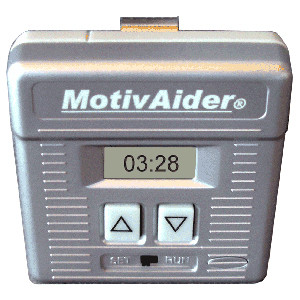
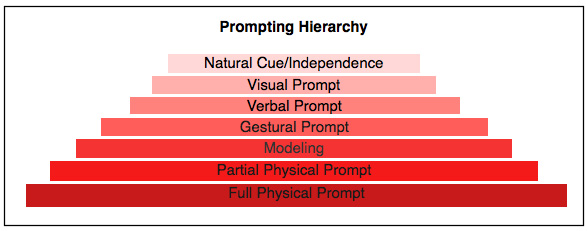
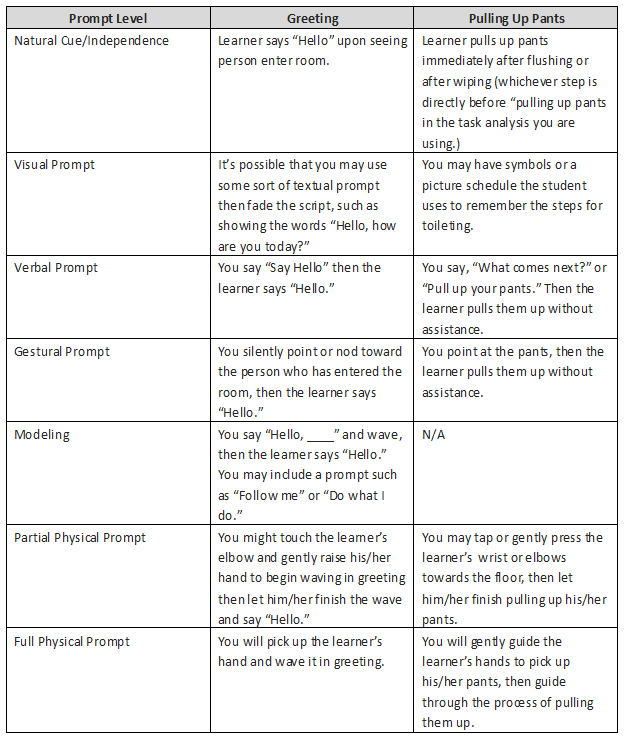
 Teaching learners with autism or other developmental delays can frequently be a complicated, stress-inducing labor of love. This is why I especially appreciate that one of the most useful strategies in working with learners of all ages is just three simple words: “Do it again.”
Teaching learners with autism or other developmental delays can frequently be a complicated, stress-inducing labor of love. This is why I especially appreciate that one of the most useful strategies in working with learners of all ages is just three simple words: “Do it again.”


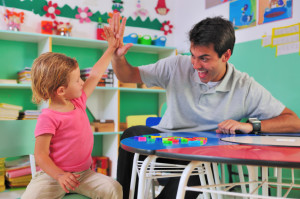 Always Be Pairing
Always Be Pairing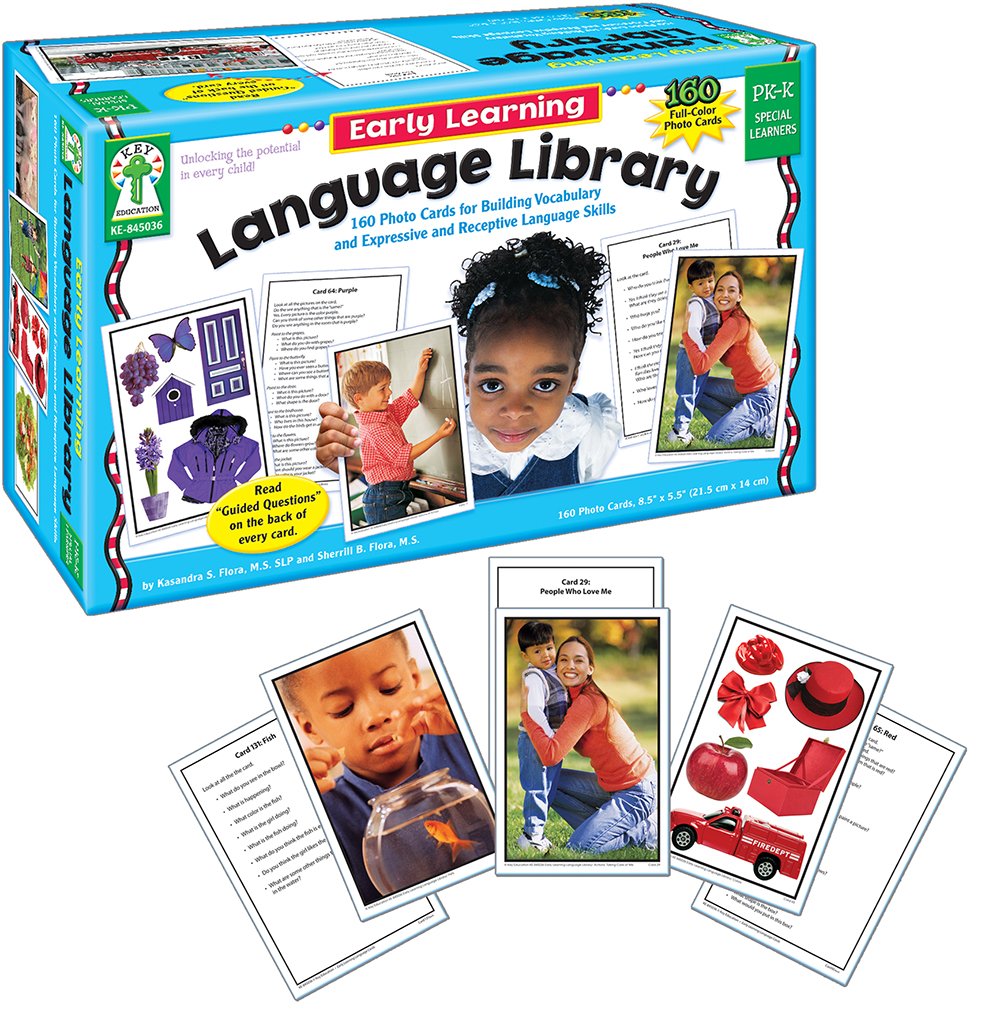 Suitable for children in preschool and kindergarten, these cards include photographs of everyday objects and people with guided questions and encouraging prompts on the back of each card to help teach effective communication skills and improve critical thinking.
Suitable for children in preschool and kindergarten, these cards include photographs of everyday objects and people with guided questions and encouraging prompts on the back of each card to help teach effective communication skills and improve critical thinking.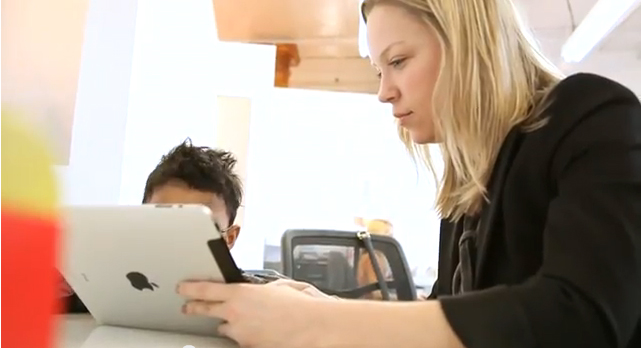 Do you believe in fate? Many years ago, after a particularly grueling day, Stacy thought, maybe it would be nice to have a 9-5 job. On a whim, she contacted Different Roads inquiring about job opportunities. When we saw her resume and credentials, we nearly jumped out of our seats with excitement. Of course, luckily for all of us, Stacy realized her calling was in the field working directly with children but she’s been consulting with us ever since.
Do you believe in fate? Many years ago, after a particularly grueling day, Stacy thought, maybe it would be nice to have a 9-5 job. On a whim, she contacted Different Roads inquiring about job opportunities. When we saw her resume and credentials, we nearly jumped out of our seats with excitement. Of course, luckily for all of us, Stacy realized her calling was in the field working directly with children but she’s been consulting with us ever since. Summer is winding down and for most it’s time to get back to a routine. For many of our students and children that means getting a handle on a busy new schedule of self-care, school, therapy sessions, extra-curricular activities, play dates and special occasions. A visual schedule or an activity schedule can help pull all of the parts of a hectic day together for a child and increase independence, build organizational skills as well as improve comprehension skills. A visual schedule provides clear expectations, utilizes a child’s visual learning strengths, can reduce anxiety or difficulty with transitions, and can increase flexibility.
Summer is winding down and for most it’s time to get back to a routine. For many of our students and children that means getting a handle on a busy new schedule of self-care, school, therapy sessions, extra-curricular activities, play dates and special occasions. A visual schedule or an activity schedule can help pull all of the parts of a hectic day together for a child and increase independence, build organizational skills as well as improve comprehension skills. A visual schedule provides clear expectations, utilizes a child’s visual learning strengths, can reduce anxiety or difficulty with transitions, and can increase flexibility.